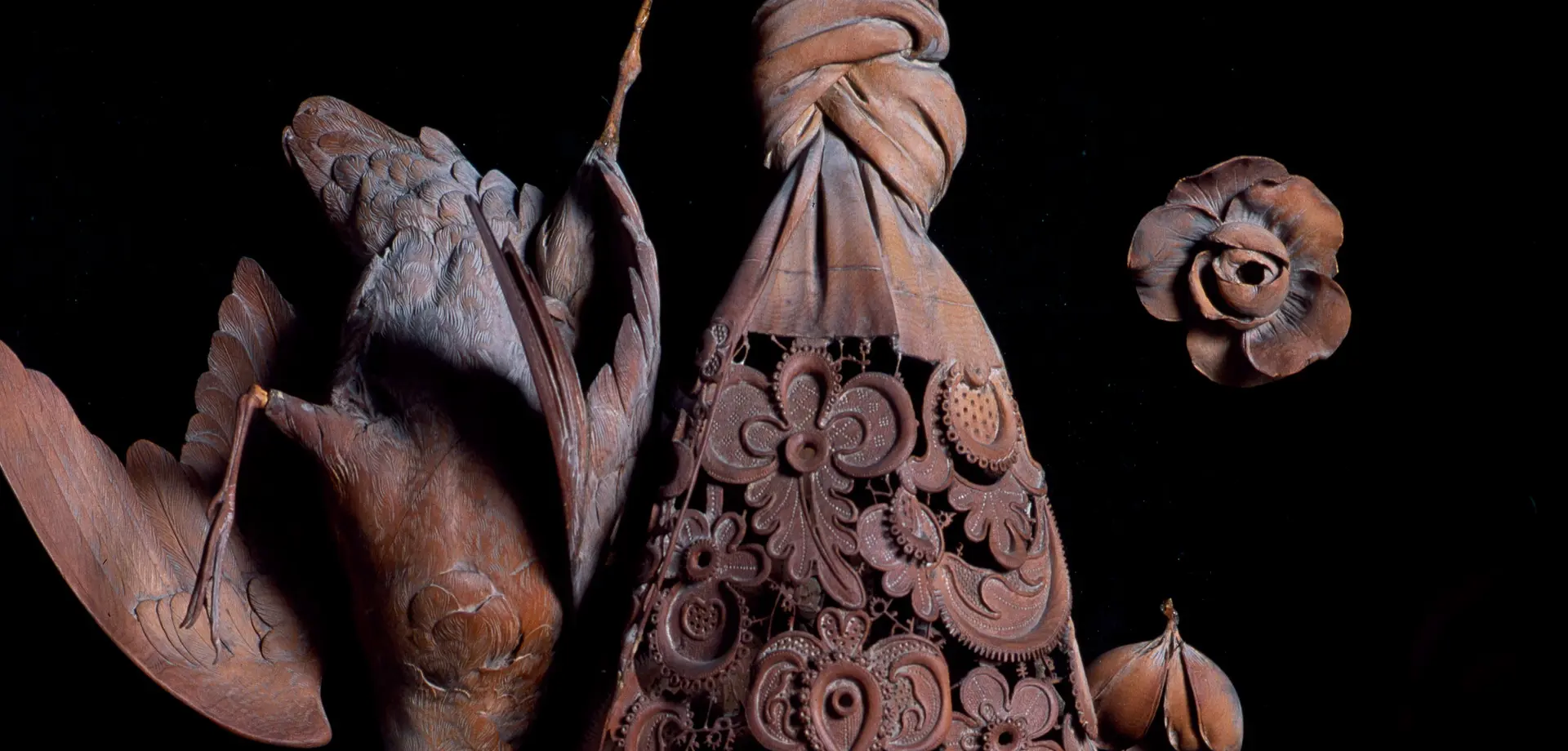- The carving depicts a lace cravat, a dead song bird, peapods, foliage and a portrait medallion of a man. The cravat is a carved imitation of Venetian needle lace, fashionable in the late 17th century, and is similar to one now in the Victoria and Albert Museum, and others that were part of carved interior decorations.
Debate still surrounds the authorship of these carved pieces. As early as 1744, they were attributed to Grinling Gibbons as were other decorative carvings at Chatsworth. However, there is no record of Gibbons working at Chatsworth. An expert on Gibbons work wrote in 1998 that the group are 'exquisitely enough carved to be ascribed to Gibbons' and that it may have been sold or presented to the 1st or 2nd Duke of Devonshire.
Alternatively, the Derbyshire-born carver Samuel Watson (1662–1715), who worked in Gibbons's style at Chatsworth between 1691 and 1711, may have acquired the group as a model for his own work, or have carved it himself. Examples of Watson’s work can be found in the Great Chamber and Chapel. Due to this debate we are not entirely sure who the image in the medallion belongs to but there are arguments that it was either a self-portrait by Gibbons or a self-portrait of Watson.



